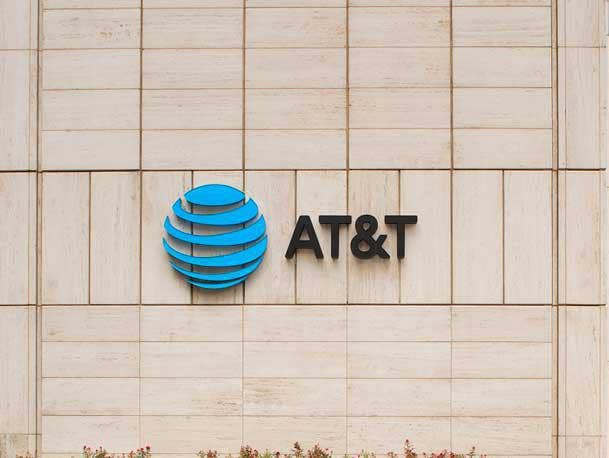AT&T Simplifies Focus Around Wireless, Fiber As Carrier Addresses Lead-Clad Cable Concerns
While the telecom giant focuses the “right,” not “empty calorie” growth with its fiber and 5G assets, AT&T shared how it is addressing the recent lead-clad telecom cable concerns highlighted by a report earlier this month.

AT&T’s strategy of leaning on its wireless and fiber assets is giving the carrier the “right” kind of growth, said CEO John Stankey during the carrier’s Q2 2023 earnings call on Wednesday.
The Dallas-based carrier over the last three years has increased its fiber locations by about 40 percent and its nationwide 5G network now covers approximately 290 million people. The company added that it now reaches more than 175 million people with its mid-band 5G spectrum.
“We’ve been very focused on ensuring that we’re getting the right kind of growth — I don’t want empty calorie growth, we want customers that come in and pay good recurring rates that are going stay with us for a long period of time [and] we have opportunities where we can co-market multiple products into a customer, which makes them even stickier… those are the right places for us to spend time and energy,” Stankey said.
AT&T also took to its second-quarter earnings call to address concerns around lead-clad cables following a report by The Wall Street Journal earlier this month that found that AT&T and Verizon were among telecom providers that abandoned a sprawling network of lead cables, which might have contaminated water and soil.
Stankey said that it’s well understood that lead-clad cables in the U.S. network infrastructure today, while making up a small percent of the infrastructure, provide important connectivity for services such as the power grid, railways, and 911 services. However, lead exposure has been regulated by federal and state authorities for decades, he said.
“We take the concerns raised very seriously … We believe that a deliberate review in collaboration with the EPA and our industry partners with reliable science at the forefront is the responsible way to evaluate this issue … we’ve always done the right thing related to the lead cables. We’re doing the right thing today, based on current science and protocols, and will do the right thing should current scientific techniques develop, and reliable evidence warrants to change that approach.”
Stankey said that AT&T is working cooperatively with the Environmental Protection Agency (EPA) on the matter.
[Related: Verizon’s Most Highly Compensated Executives In 2022]
Stankey said that the company is on track to achieve its objective to double down on its core telecom strategy that it set in motion three years ago. He said that AT&T has achieved its $6 billion cost-cutting goal ahead of schedule and is now targeting another more than $2 billion over the next three years.
“These additional cost savings will be largely driven by the sunsetting of our legacy product portfolio and supporting infrastructure. As we ramp our execution of this work, we will begin to enjoy the benefits of our simplified focus on wireless and fiber,” he said.
Financial Results
The company reported 326,000 postpaid phone subscribers in the second quarter, a figure that was nearly 60 percent lower than its result a year earlier.
AT&T no longer breaks out its Business Solutions revenue, but Business wireline services revenue continued to decline, falling 5.6 percent to $5.28 billion compared to $5.60 billion a year ago, which AT&T attributed to lower demand for legacy voice and data services and product simplification, which was partially offset by growth in connectivity services. Meanwhile, AT&T CFO Pascal Desroches said that AT&T’s Business Solutions Wireless Service revenues grew 9.1 percent during the second quarter of 2023.
The carrier said that it serves the largest global companies, government agencies and small businesses with more than 750,000 business buildings in the U.S. lit with fiber from AT&T, reaching more than 3 million U.S. business customer locations. AT&T said that more than 10 million business customer locations are on or within 1,000 feet of its fiber footprint.
Desroches earlier this year said that the company didn’t expect business wireline revenue to grow in the short term and is looking to 2024 for stabilization.
The Dallas-based carrier’s mobility segment revenue totaled $20.32 billion during the quarter, a 2 percent bump up compared with $19.92 billion in the same quarter a year ago. The overall communications business, which includes high-speed internet, video and legacy voice services, climbed slightly to $28.85 billion during the quarter compared with $28.70 billion in the second quarter of 2023.
The carrier’s Mobility Service revenue climbed 5 percent to $15.75 billion, up from $15.00 billion a year ago driven by subscriber growth. Mobility Equipment revenues declined 3.4 percent from $4.92 billion in Q2 2022 to $4.75 billion in Q2 2023, which the company said was driven by lower volumes.
Total operating revenue for the second quarter that ended June 30 was $29.92 billion, a modest increase of .9 percent from $29.64 billion in the same quarter one year earlier. Diluted earnings per share during AT&T’s fiscal second quarter was 61 cents, up from 56 cents one year ago. AT&T’s revenues beat Wall Street’s expectations during the second fiscal quarter of the year.